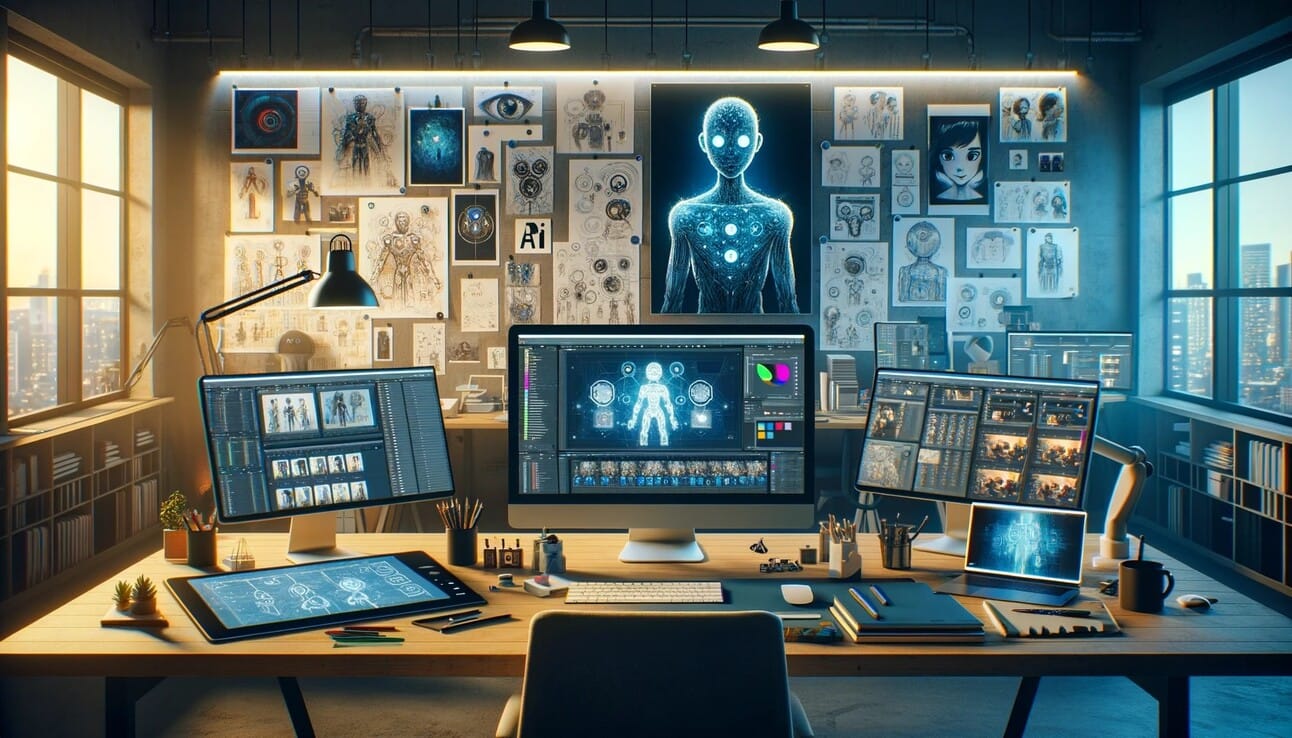- Empowering Small Business Owners with AI
- Posts
- Leveraging AI in Animation: A Guide to Tools and Techniques for Modern Animators
Leveraging AI in Animation: A Guide to Tools and Techniques for Modern Animators

In the ever-evolving world of animation, the integration of Artificial Intelligence (AI) has become a game-changer. Animators can now harness the power of AI to make their creative process more efficient, innovative, and captivating. In this article, I’ll explore various AI tools and techniques that can significantly aid animators in their craft.
1. Enhancing Character Design with AI
Tools like DALL-E and Artbreeder are revolutionizing character design. DALL-E, an AI program developed by OpenAI, generates images from textual descriptions. This can be a boon for animators looking to create unique characters or need inspiration for new designs. Artbreeder, on the other hand, uses a technique called 'Genetic Algorithms' to blend and mutate images, offering endless possibilities in character and environment creation.
2. Streamlining Storyboarding with AI
AI-driven tools can generate quick storyboards and layout sketches, aiding in visualizing scenes effectively. Storyboard That and Boords are notable examples, offering intuitive interfaces to create, edit, and share storyboards. These tools can significantly cut down the time spent on the manual drafting of storyboards.
3. AI in Animation Tweens and Motion Capture
For in-between frames (tweening), AI tools can automate the process, ensuring smoother animations. Adobe Character Animator stands out in this category, offering features like automatic lip-sync and facial recognition-driven animation. Additionally, AI-driven motion capture tools are making significant strides, aiding animators in creating more realistic and fluid movements.
4. Creating Textures and Backgrounds with AI
AI can also assist in generating detailed textures and backgrounds. Tools like Quixel Megascans offer vast libraries of high-quality scanned materials and 3D objects, which can be used to create realistic environments, particularly in 3D animation.
5. Automating Lip Sync and Dialogue
Papagayo and Adobe's Project VoCo are leading tools in automating lip-syncing to dialogue. Project VoCo can synthesize speech that sounds like a specific person, making it easier to create voiceovers or dialogues for animated characters.
6. AI for Coloring and Shading
Tools like PaintsChainer use AI to automatically color and shade drawings. This can be a huge time-saver in 2D animation, where coloring can be a meticulous and time-consuming process.
7. Utilizing AI for Pose Estimation
For realistic human movements, pose estimation AI tools are invaluable. DeepMotion is an example, offering AI-driven body tracking that helps animators understand and replicate natural human movements in their characters.
8. Feedback and Improvement through AI Analysis
AI can analyze animations and provide feedback. Looom is an iPad app that incorporates AI to help animators refine their work, suggesting improvements in motion and pacing.
9. Developing Custom AI Tools
For animators with programming knowledge, creating custom AI tools tailored to specific needs can be incredibly beneficial. Python, with its rich set of libraries like TensorFlow and PyTorch, is an excellent starting point for developing such tools.
10. AI in Project Management
AI-driven project management tools like Trello or Asana with integrated AI features can help manage animation projects more effectively, from planning to execution.
Conclusion
The integration of AI in animation is not just about automating tasks but also about opening up new creative avenues. As animators, it's essential to stay updated with these technological advancements to enhance our storytelling and artistic capabilities. AI is a powerful ally in the creative process, and when used wisely, it can bring a new level of depth and efficiency to our work.